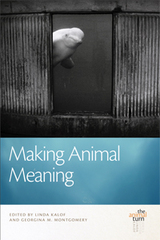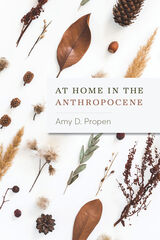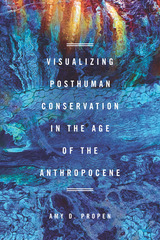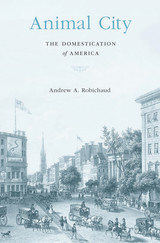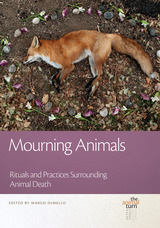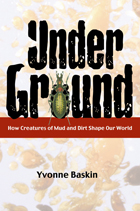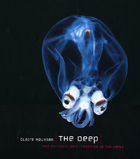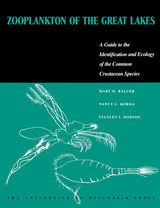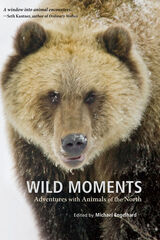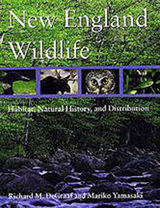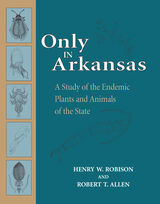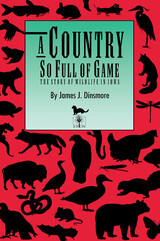PART 1-Conceptual Framework
Introduction to Part 1:
The Conceptual Basis of Species Distribution
Modeling: Time for a Paradigm Shift?
Raymond J. O'Connor 25
Chapter 1
Foundations of Species-Environment Relations
Patricia J. Heglund 35
Chapter 2
Standard Terminology: Toward a Common
Language to Advance Ecological Understanding
and Application
Michael L. Morrison and Linnea S. Hall 43
Chapter 3
Linking Populations and Habitats: Where
Have We Been? Where Are We Going?
Dean F Stauffer 53
Chapter 4
Approaches to Habitat Modeling: The Tensions
between Pattern and Process and between
Specificity and Generality
Beatrice Van Home 63
Chapter 5
Case Studies of the Use of Environmental
Gradients in Vegetation and Fauna Modeling:
Theory and Practice in Australia and
New Zealand
Michael P. Austin 73
Chapter 6
Habitat Models Based on Numerical
Comparisons
K. Shawn Smallwood 83
Chapter 7
The Role of Category Definition in Habitat
Models: Practical and Logical Limitations of
Using Boolean, Indexed, Probabilistic, and
Fuzzy Categories
Kristina E. Hill and Michael W Binford 97
Chapter 8
Use of Regional-scale Exploratory Studies to
Determine Bird-habitat Relationships
Jock S. Young and Richard L. Hutto 107
PART 2-Temporal and Spatial Scales
Introduction to Part 2:
Role of Temporal and Spatial Scale 123
Michael L. Morrison
Chapter 9
Predicting Distribution and Abundance:
Thinking within and between Scales
Brian A. Maurer 125
Chapter 10
A Comparison of Fine- and Coarse-resolution
Environmental Variables Toward Predicting
Vegetation Distribution in the Mojave Desert
Kathryn Thomas, Todd Keeler-Wolf, and
Janet Franklin 133
Chapter 11
The Influence of Spatial Scale on Landscape
Pattern Description and Wildlife Habitat
Assessment
Margaret Katherine Trani (Griep) 141
Chapter 12
Predicting the Occurrence of Amphibians:
An Assessment of Multiple-scale Models
Catherine M. Johnson, Lucinda B. Johnson,
Carl Richards, and Val Beasley 157
Chapter 13
Dynamic Patterns of Association between
Environmental Factors and Island Use by
Breeding Seabirds
Catherine M. Johnson and William B. Krohn 171
Chapter 14
Geographic Modeling of Temporal Variability in
Habitat Quality of the Yellow-billed Cuckoo on the
Sacramento River, Miles 196-219, California
Steven E. Greco, Richard E. Plant, and
Reginald H. Barrett 183
Chapter 15
Effects of Spatial Scale on the Predictive Ability of
Habitat Models for the Green Woodpecker in
Switzerland
Claudine Tobalske 197
Chapter 16
Wildlife Habitat Modeling in an Adaptive
Framework: The Role of Alternative Models
Michael J. Conroy and Clinton T Moore 205
Chapter 17
Contrasting Determinants of Abundance in
Ancestral and Colonized Ranges of an Invasive
Brood Parasite
D. Caldwell Hahn and Raymond J. O'Connor 219
Chapter 18
Biodiversity Conflict Analysis at Multiple Spatial
Scales
Christopher B. Cogan 229
Chapter 19
A Collaborative Approach in Adaptive Management
at a Large-landscape Scale
Cynthia J. Zabel, Lynn M. Roberts, Barry S.
Mulder, Howard B. Stauffer, Jeffrey R. Dunk,
Kelly Wolcott, David Solis, Mike Gertsch, Brian
Woodbridge, Adrienne Wright, Greg Goldsmith,
and Chire Keckler 241
Chapter 20
Modeling Wildlife Distribution within Urbanized
Environments: An Example of the Eurasian Badger
Meles meles L. in Britain
Amanda Wright and Alan H. Fielding 255
PART 3---Modeling Tools and
Accuracy Assessment
Introduction to Part 3:
Modeling Tools and Accuracy Assessment
Randall B. Boone and William B. Krohn 265
Chapter 21
What Are the Appropriate Characteristics of an
Accuracy Measure?
Alan H. Fielding 271
Chapter 22
A Minimalist Approach to Mapping Species'
Habitat: Pearson's Planes of Closest Fit
John T. Rotenberry, Steven T. Knick, and
James E. Dunn 281
Chapter 23
Geospatial Data in Time: Limits and Prospects for
Predicting Species Occurrences
Geoffrey M. Henebry and James W. Merchant 291
Chapter 24
Predictions and Their Validation: Rare Plants in
the Central Highlands, Victoria, Australia
Jane Elith and Mark Burgman 303
Chapter 25
Semiquantitative Response Models for Predicting
the Spatial Distribution of Plant Species
Antoine Guisan 315
Chapter 26
Patch-based Models to Predict Species Occurrence:
Lessons from Salmonid Fishes in Streams
Jason B. Dunham, Bruce E. Rieman, and
James T. Peterson 327
Chapter 27
Autologistic Regression Modeling of American
Woodcock Habitat Use with Spatially Dependent Data
David S. Klute, Matthew J. Lovallo, and
Walter M. Tzilkowski 335
Chapter 28
A Neural Network Model for Predicting Northern
Bobwhite Abundance in the Rolling Red Plains of
Oklahoma
Jeffrey J. Lusk, Fred S. Guthery, and
Stephen J. DeMaso 345
Chapter 29
Incorporating Detection Uncertainty into
Presence-Absence Surveys for Marbled Murrelet
Howard B. Stauffer, C. John Ralph, and
Sherri L. Miller 357
Chapter 30
Accuracy of Bird Range Maps Based on Habitat
Maps and Habitat Relationship Models
Barrett A. Garrison and Thomas Lupo 367
Chapter 31
A Monte Carlo Experiment for Species Mapping
Problems
Daniel W McKenney, Lisa A. Venier,
Aidan Heerdegen, and Mick A. McCarthy 377
Chapter 32
Measuring Prediction Uncertainty in Models of
Species Distribution
Jennie L. Pearce, Lisa A. Venier, Simon Ferrier,
and Daniel W. McKenney 383
Chapter 33
Toward Better Atlases: Improving Presence-
absence Information
Douglas H. Johnson and Glen A. Sargeant 391
Chapter 34
Predicting the Distributions of Songbirds in
Forests of Central Wisconsin
Margaret J. Robertsen, Stanley A. Temple, and
John Coleman 399
Chapter 35
Poisson Regression: A Better Approach to
Modeling Abundance Data?
Malcolm T. Jones, Gerald J. Niemi, JoAnn M.
Hanowski, and Ronald R. Regal 411
Chapter 36
Predicting Vertebrate Occurrences from Species
Habitat Associations: Improving the Interpretation
of Commission Error Rates
Sandra M. Schaefer and William B. Krohn 419
Chapter 37
Assessment of Spatial Autocorrelation in
Empirical Models in Ecology
Mary Cablk, Denis White, and A. Ross Kiester 429
Chapter 38
Ranked Modeling of Small Mammals
Based on Capture Data
Vickie J. Smith and Jonathan A. Jenks 441
Chapter 39
Calibration Methodology for an Individual-based,
Spatially Explicit Simulation Model: Case Study of
White-tailed Deer in the Florida Everglades
Christine S. Hartless, Ronald F. Labisky, and
Kenneth M. Portier 447
PART 4-Predicting Species
Presence and Abundance
Introduction to Part 4:
Predicting Species Presence and Abundance
Frances C. James and Charles E. McCulloch 461
Chapter 40
Multimodeling: New Approaches for Linking
Ecological Models
Louis J. Gross and Donald L. DeAngelis 467
Chapter 41
Challenges of Modeling Fungal Habitat: When and
Where Do You Find Chanterelles?
Tina A. Dreisbach, Jane E. Smith, and
Randy Molina 475
Chapter 42
Predicting Presence/Absence of Plant Species for
Range Mapping: A Case Study from Wyoming
Walter Fertig and William A. Reiners 483
Chapter 43
A Model to Predict the Occurrence of Surviving
Butternut Trees in the Southern Blue Ridge
Mountains
Frank T. van Manen, Joseph D. Clark, Scott E.
Schlarbaum, Kristine Johnson, and Glenn Taylor 491
Chapter 44
Predicting Meadow Communities and Species
Occurrences in the Greater Yellowstone Ecosystem
Diane M. Debinski, Mark E. Jakubauskas,
Kelly Kindscher, Erika H. Saveraid, and
Maria G. Borgognone 499
Chapter 45
Modeling Species Richness and Habitat Suitability
for Taxa of Conservation interest
Erica Fleishman, Dennis D. Murphy, and
Per Sjogren-Gulve 507
Chapter 46
Discontinuity in Stream-fish Distributions:
Implications for Assessing and Predicting Species
Occurrence
Paul L. Angermeier, Kirk L. Krueger, and
C. Andrew Dolloff 519
Chapter 47
A GIS-based Habitat Model for Wood Thrush,
Hylocichla mustelina, in Great Smoky Mountains
National Park
Susan A. Shriner, Theodore R. Simons, and
George L. Farnsworth 529
Chapter 48
Controlling Bias in Biodiversity Data
David R. B. Stockwell and
A. Townsend Peterson 537
Chapter 49
Modeling Cowbird Occurrences and Parasitism
Rates: Statistical and Individual-based
Approaches
Ann-Marie Shapiro, Steven J. Harper, and
James Westervelt 547
Chapter 50
Modeling Bird Abundance from Forest Inventory
Data in the Boreal Mixed-wood Forests of Canada
Pierre R. Vernier, Fiona K. A. Schmiegelow, and
Steve G. Cumming 559
Chapter 51
Species Commonness and the Accuracy of
Habitat-relationship Models
Jason W. Karl, Leona K. Svancara, Patricia J.
Heglund, Nancy M. Wright, and J. Michael Scott 573
Chapter 52
Spatial Analysis of Stopover Habitats of
Neotropical Migrant Birds
Scott M. Pearson and Theodore R. Simons 581
Chapter 53
Effects of Niche Width on the Performance and
Agreement of Avian Habitat Models
Jeffrey A. Hepinstall, William B. Krohn, and
Steven A. Sader 593
Chapter 54
A Test and Comparison of Wildlife-habitat
Modeling Techniques for Predicting Bird
Occurrence at a Regional Scale
Randy Dettmers, David A. Buehler, and
John B. Bartlett 607
Chapter 55
Distributional Prediction Based on Ecological
Niche Modeling of Primary Occurrence Data
A. Townsend Peterson, David R. B. Stockwell,
and Daniel A. Kluza 617
Chapter 56
Statistical Mapping of Count Survey Data
J. Andrew Royle, William A. Link, and
John R. Sauer 625
Chapter 57
Influence of Selected Environmental Variables on
GIS-habitat Models Used for Gap Analysis
Carlos Gonzalez-Rebeles, Bruce C. Thompson,
and Fred C. Bryant 639
Chapter 58
A Distribution Model for the Eurasian Lynx (Lynx
lynx) in the Jura Mountains, Switzerland
Fridolin Zimmermann and Urs Breitenmoser 653
PART 5-Predicting Species:
Populations and Productivity
Introduction to Part 5:
Mapping a Chimera?
Edward 0. Garton 663
Chapter 59
Functional Definition of Landscape Structure
Using a Gradient-based Approach
David M. Theobald and N. Thompson Hobbs 667
Chapter 60
Modeling Habitat-based Viability from
Organism to Population
Gary J. Roloff and Jonathan B. Haufler 673
Chapter 61
Relations between Canopy Cover and the
Occurrence and Productivity of California
Spotted Owls
Carolyn T. Hunsaker, Brian B. Boroski, and
George N. Steger 687
Chapter 62
Using a Spatially Explicit Model to Analyze Effects
of Habitat Management on Northern Spotted Owls
Martin G. Raphael and Richard S. Holthausen 701
Chapter 63
Estimating the Effective Area of Habitat Patches
in Heterogeneous Landscapes
Thomas D. Sisk, Barry Noon, and
Haydee M. Hampton 713
Chapter 64
Demographic Monitoring and the identification of
Transients in Mark-recapture Models
M. Philip Nott and David F DeSante 727
PART 6-Future Directions
Chapter 65
Predicting Species Occurrences: Progress,
Problems, and Prospects
John A. Wiens 739
Literature Cited 751
Contributors 837
Index 847




